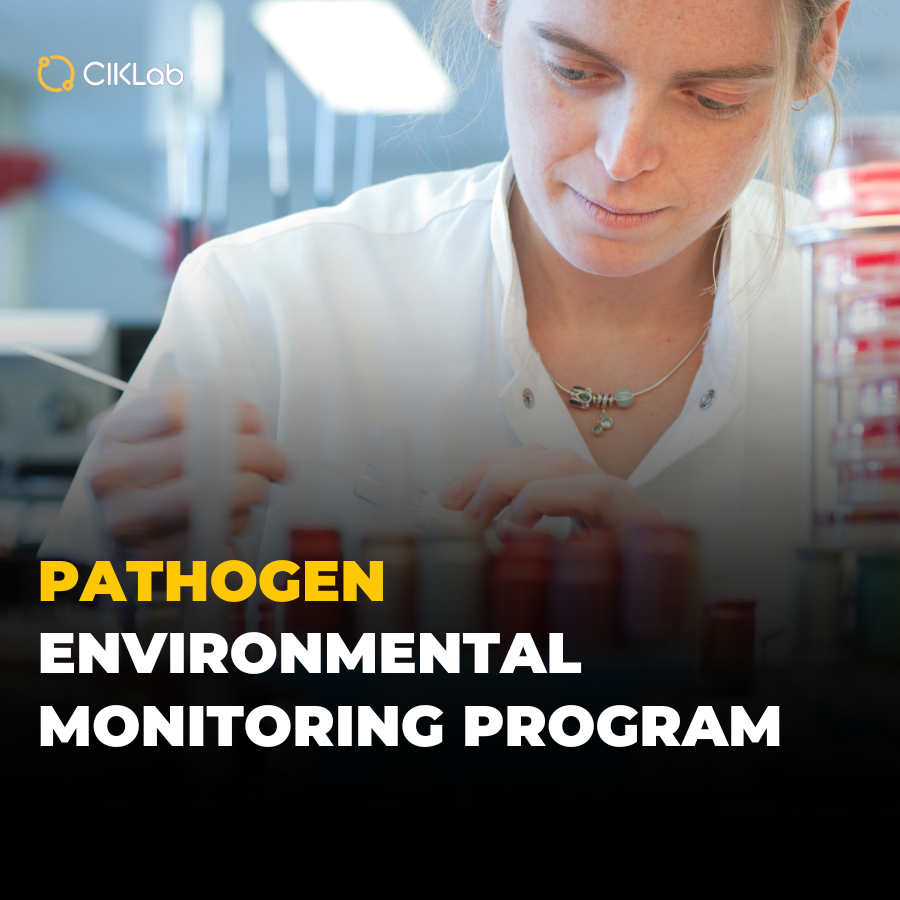Furocoumarins are phototoxic compounds found in certain plants, food products, and cosmetics. Their potential presence in our diet raises questions about food safety and regulation.
%20(474%20%C3%97%20239%20px)%20(6)-2.png?width=480&height=320&name=BLOG%20CIKLab%20(480%20%C3%97%20320%20px)%20(474%20%C3%97%20239%20px)%20(6)-2.png)
Summary :
2) Which foods may contain furocoumarins?
3)What are the standards for furocoumarins in food products ?
4) What methods are available for analyzing furocoumarins?
5) Which laboratories analyze furocoumarins in food and cosmetics?
What are furocoumarins ?
Furocoumarins, or furanocoumarins, are natural organic compounds present in certain plants (phytotoxins). They act as a defense and resistance mechanism for plants under various stress conditions such as pests, bacteria, and herbivores (phytoalexins).
Furocoumarins are phototoxic, meaning they become extremely reactive with nucleic acids and proteins in the presence of UV radiation, both after skin contact (phytophotodermatitis) and after ingestion. It is now well established that there is a link between certain skin cancers and exposure to furocoumarins when combined with UV radiation.
Furocoumarins consist of a furan ring associated with a coumarin. The position of the furan ring (6.7, 7.8, etc.) generates a wide variety of isomers, including psoralen, angelicin, and bergapten. These compounds are never found isolated and pure in nature but rather as "mixtures" of isomers, with the distribution depending on the type of plant.
These molecules fall into two major categories:
- Angular furocoumarins have a closed cyclic structure (e.g., angelicin, found in Apiaceae).
- Linear furocoumarins have an open structure (e.g., psoralens, primarily found in Rutaceae).

List of Major Furocoumarins
- Angelicin (CAS No: 523-50-2)
- Bergamottin (CAS No: 7380-40-7)
- Bergapten (5-MOP) (CAS No: 484-20-8)
- Bergaptol (CAS No: 486-60-2)
- Byakangelicol (CAS No: 61046-59-1)
- Byakangelicin (CAS No: 482-25-7)
- Epoxybergamottin (CAS No: 206978-14-5)
- Heraclenin (CAS No: 35740-18-2)
- Imperatorin (CAS No: 482-44-0)
- Isobergapten (CAS No: 482-48-4)
- Isoimperatorin (CAS No: 482-45-1)
- Isopeucedanin (CAS No: 482-27-9)
- Oxypeucedanin (CAS No: 737-52-0)
- Hydrated Oxypeucedanin (CAS No: 2643-85-8)
- Pellopterin (CAS No: 2543-94-4)
- Psoralen (8-MOP) (CAS No: 66-97-7)
- 8-Geranyloxypsoralen (CAS No: 7437-55-0)
- Xanthotoxin (CAS No: 298-81-7)
- Xanthotoxol (CAS No: 2009-24-7)
- 6’,7’-Dihydroxybergamottin (CAS No: 145414-76-2)

Which foods may contain furocoumarins?
Furocoumarins are considered natural “toxins” and are found in a wide variety of plants consumed by humans, mainly in the Apiaceae, Moraceae, Fabaceae and Rutaceae families.Common foods containing furocoumarins include :
- parsley,
- dill
- carrots
- celery
- parsnips
- figs (sap),
- coriander,
- cumin,
- fennel,
- tonka beans,
- citrus fruits (zest, juice, drinks, tea, alcohol, marmalade, etc.)
Citrus fruits contain relatively high concentrations of furocoumarins. Each type of citrus fruit contains a different distribution of furocoumarin isomers and derivatives. Furocoumarins are mainly found in zest, and the most significant dietary exposure is from citrus juices (grapefruit, lime), citrus-based drinks and macerated citrus-based alcoholic beverages (limoncello, bergamino) and, of course, essential oils.
Some herbal food supplements (e.g. Angelica archangelica L) may contain furocoumarins, which remain “substances to be monitored” as defined in the Plant Order of June 24, 2014.
What are the standards for furocoumarins in food products ?
There are no official standards or limits for furocoumarins in foods [1].
A persistent challenge in research on dietary exposure to furocoumarins lies in the lack of comprehensive data on furocoumarin levels in foods, which makes risk analysis difficult. Consequently, only a few studies to date have attempted to assess dietary intake of furocoumarins, and the estimates obtained vary [2].
Some daily dietary exposure data have been put forward for furocoumarins [6]:
1.30 mg/day/person (USA)
1.45 mg/day/person (Germany)
1.20 mg/day/person (UK)
In dietary supplements, furocoumarins are among the substances to be monitored in the french arrêté plantes of June 24, 2014 , and they must be included in control plans.
| Scientific Name | Family | Common Name | Used Parts | Substances to Monitor |
|---|---|---|---|---|
| Angelica archangelica L. | Apiaceae | Garden Angelica | Leaf, fruit, rhizome, root | Furocoumarins, coumarins |
| Angelica dahurica (Hoffm.) Benth. & Hook.f. ex Franch. & Sav. | Apiaceae | Bai Zhi | Root | Furocoumarins, coumarins |
| Angelica pubescens Maxim. | Apiaceae | Shishiudo, Du Huo | Root, rhizome, leaf | Furocoumarins |
| Angelica sinensis (Oliv.) Diels | Apiaceae | Chinese Angelica, Dong Quai | Root | Carvacrol, safrole, isosafrole, furocoumarins |
| Citrus aurantium L. | Rutaceae | Bitter Orange, Bigarade Orange, Curaçao Orange | Leaf, flower, fruit, pericarp (peel or zest) | Furocoumarins, p-synephrine, octopamine |
| Citrus limon (L.) Burm. f. | Rutaceae | Lemon Tree, Lemon | Fruit, leaf, flower, pericarp (peel or zest) | Furocoumarins |
| Citrus reticulata Blanco | Rutaceae | Mandarin Orange | Fruit, pericarp (peel or zest) | Furocoumarins |
| Citrus paradisi Macfad. | Rutaceae | Grapefruit Tree, Pomelo | Fruit, seed (pip), pericarp (peel or zest) | Furocoumarins |
| Ficus carica L. | Moraceae | Common Fig | False fruit, leaf, leaf bud, stem | Furocoumarins (psoralen, bergapten) |
| Pimpinella anisum L. | Apiaceae | Anise | Fruit | Estragole, furocoumarins |
| Pimpinella major (L.) Huds. | Apiaceae | Greater Burnet-Saxifrage | Leaf, root | Furocoumarins |
| Pimpinella saxifraga L. | Apiaceae | Lesser Burnet-Saxifrage | Leaf, root, young shoot, seed | Furocou |
Regarding essential oils considered traditional in human food: here is the list of plants whose furocoumarins are considered as substances at risk : source DGCCRF - January 2019
| Plants | Common Name | Risk Substances |
|---|---|---|
| Angelica archangelica L. | Garden Angelica | Furocoumarins |
| Apium graveolens L. | Celery | Furocoumarins |
| Petroselinum crispum (Mill.) Nyman ex A.W. Hill | Parsley | Furocoumarins, Elemicin, Apiole, Myristicin |
| Citrus aurantium L. | Bitter Orange | Furocoumarins, Synephrine |
| Citrus bergamia Risso & Poit. | Bergamot | Furocoumarins |
| Citrus limon (L.) Osbeck | Lemon Tree | Furocoumarins |
| Citrus paradisi Macfad. | Grapefruit | Furocoumarins |
| Citrus reticulata Blanco | Mandarin Orange | Furocoumarins |
| Citrus sinensis (L.) Osbeck | Orange Tree | Furocoumarins |
What methods are available for analyzing furocoumarins?
Quantification and determination of furocoumarins are mainly carried out by HPLC (LC); either HPLC-UV or now very commonly LC-MS/MS. Of course, some furocoumarins also do very well with GC-MS. A recent HPTLC method has been developed for routine quality control of citrus essential oils [ 7 ].
Which laboratories analyze furocoumarins in food and cosmetics?
sources :
- [ 1 ] Arigò, A., Rigano, F., Russo, M., Trovato, E., Dugo, P., & Mondello, L. (2021). Dietary Intake of Coumarins and Furocoumarins through Citrus Beverages: A Detailed Estimation by a HPLC-MS/MS Method Combined with the Linear Retention Index System. Foods, 10(7), 1533
- [ 2 ] Melough MM, Lee SG, Cho E, Kim K, Provatas AA, Perkins C, Park MK, Qureshi A, Chun OK. Identification and Quantitation of Furocoumarins in Popularly Consumed Foods in the U.S. Using QuEChERS Extraction Coupled with UPLC-MS/MS Analysis. J Agric Food Chem. 2017 Jun 21;65(24):5049-5055. doi: 10.1021/acs.jafc.7b01279. Epub 2017 Jun 12. PMID: 28581738; PMCID: PMC8070520.
- [ 3 ] Kerekes D, Csorba A, Gosztola B, Németh-Zámbori É, Kiss T, Csupor D. Furocoumarin Content of Fennel-Below the Safety Threshold. Molecules. 2019 Aug 5;24(15):2844. doi: 10.3390/molecules24152844. PMID: 31387269; PMCID: PMC6696257.
- [ 4 ] Doerper, S. (2008). Modification de la Synthèse des Furocoumarines chez Ruta graveolens L. par une Approche de Génie Métabolique. Doctoral thesis, INPL, UMR 1121, INPL-INRA
- [ 5 ] Committee E.S. Scientific Opinion on a Qualified Presumption of Safety (QPS) approach for the safety assessment of botanicals and botanical preparations. EFSA J. 2014;12:1–38. doi: 10.2903/j.efsa.2014.3593
- [ 6 ] SKLM (2006) Toxicological Assessment of Furocoumarins in Foodstuffs, DFG, Bonn.
- [7] Le Borgne, E., Cicchetti, E., & Bertrand, T. (2017). Méthodes HPTLC pour l’analyse qualitative et quantitative de furocoumarines sélectionnées dans les huiles essentielles. Flavour and Fragrance Journal, Special Issue: 47th International Symposium on Essential Oils (ISEO).
©2024 CIKLab.com All rights reserved.





